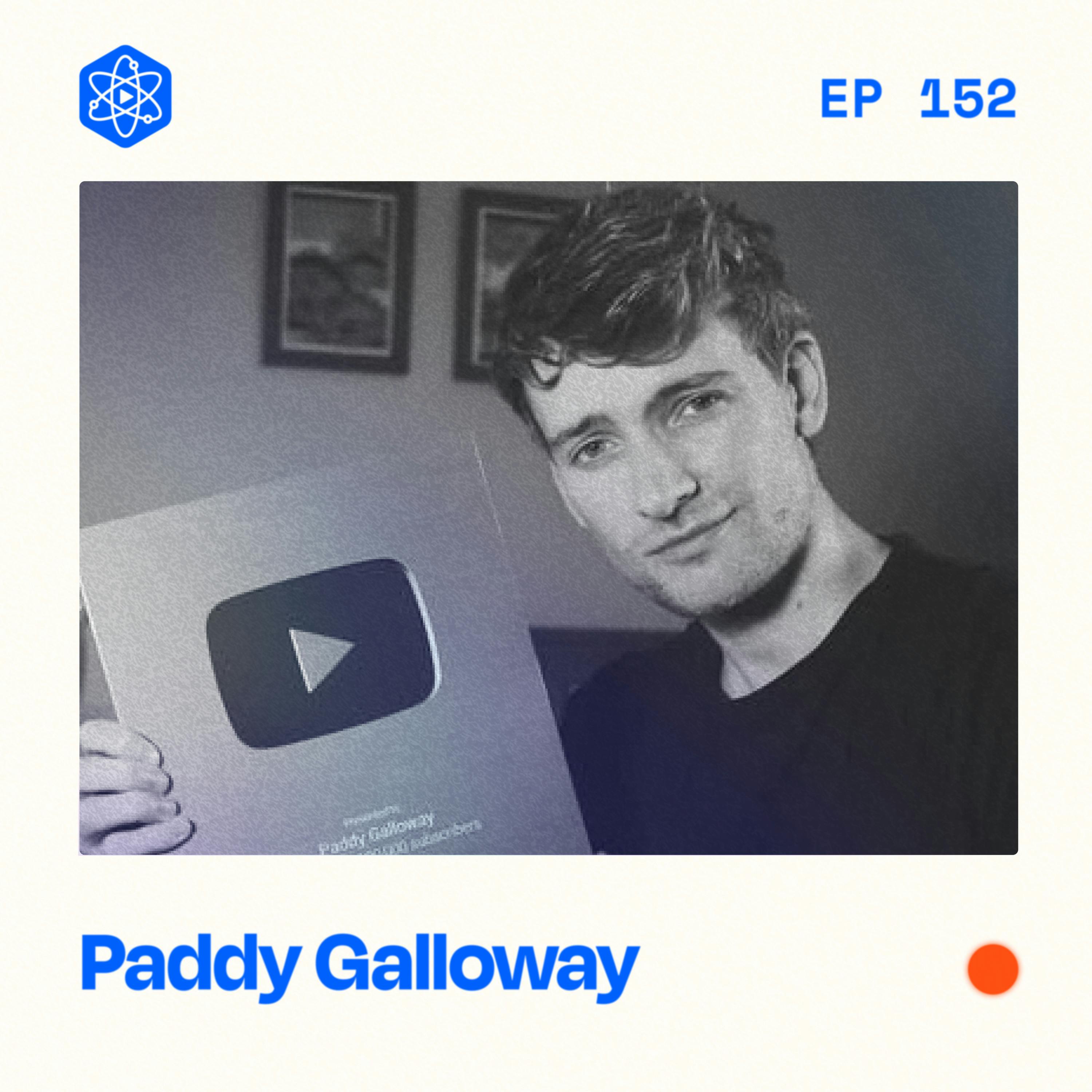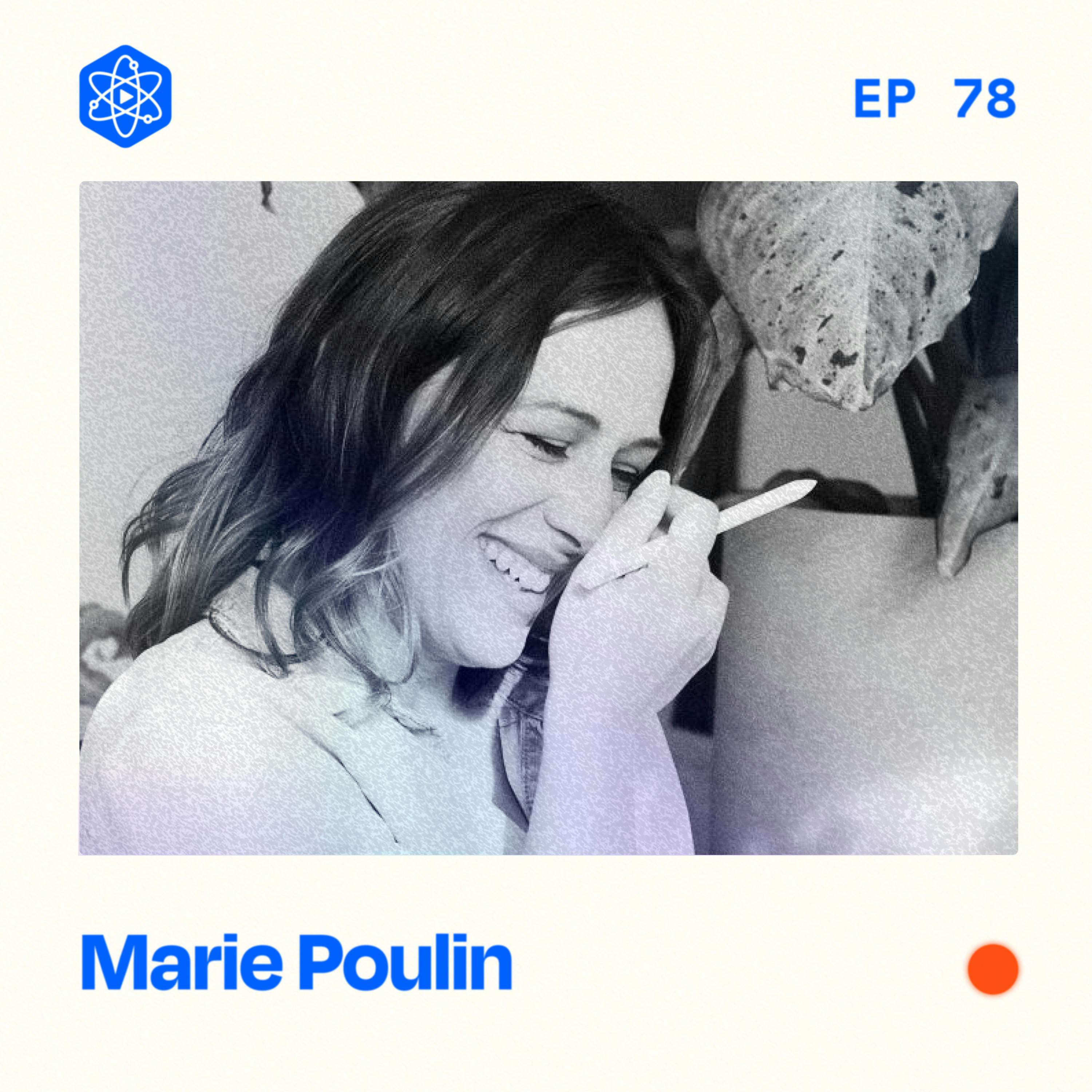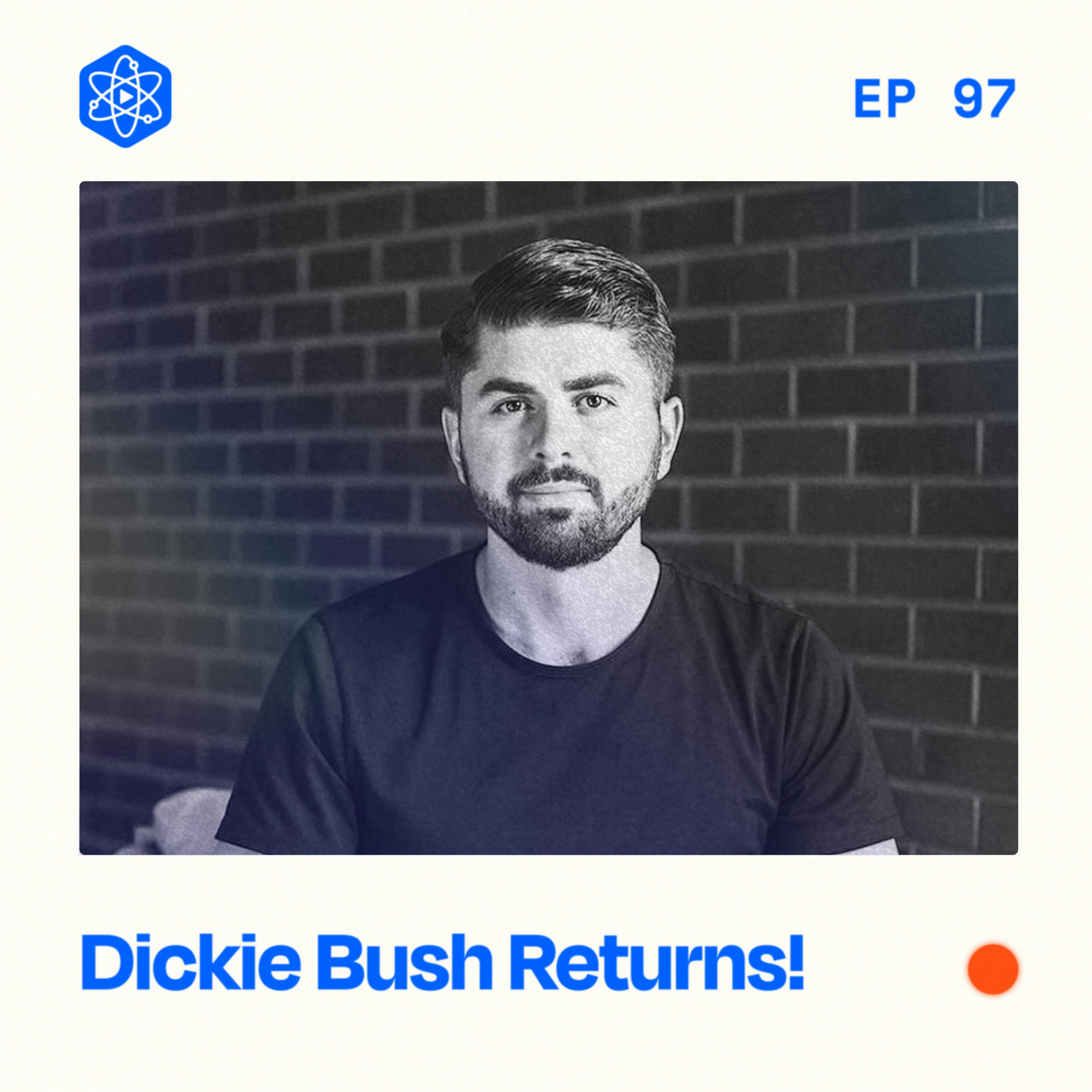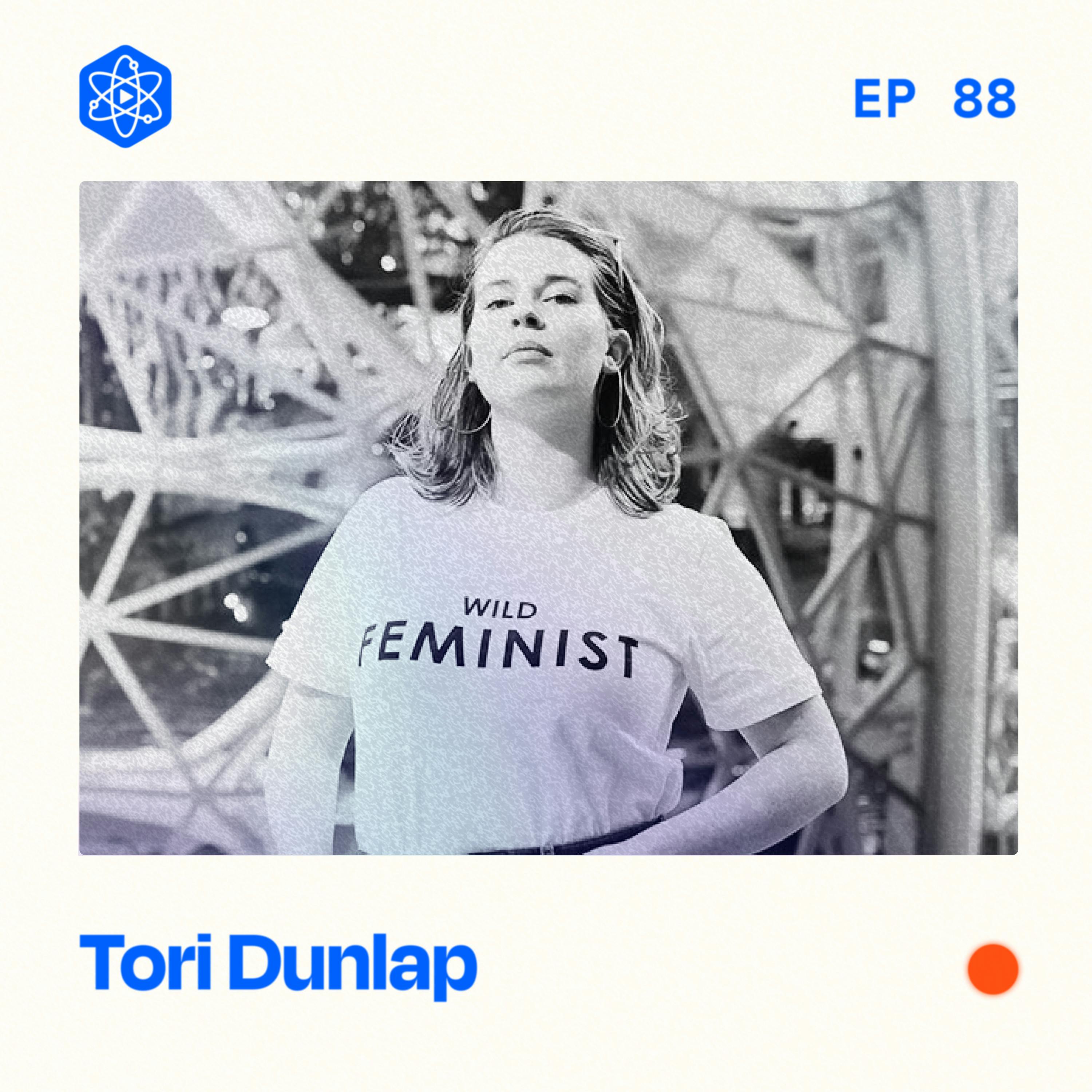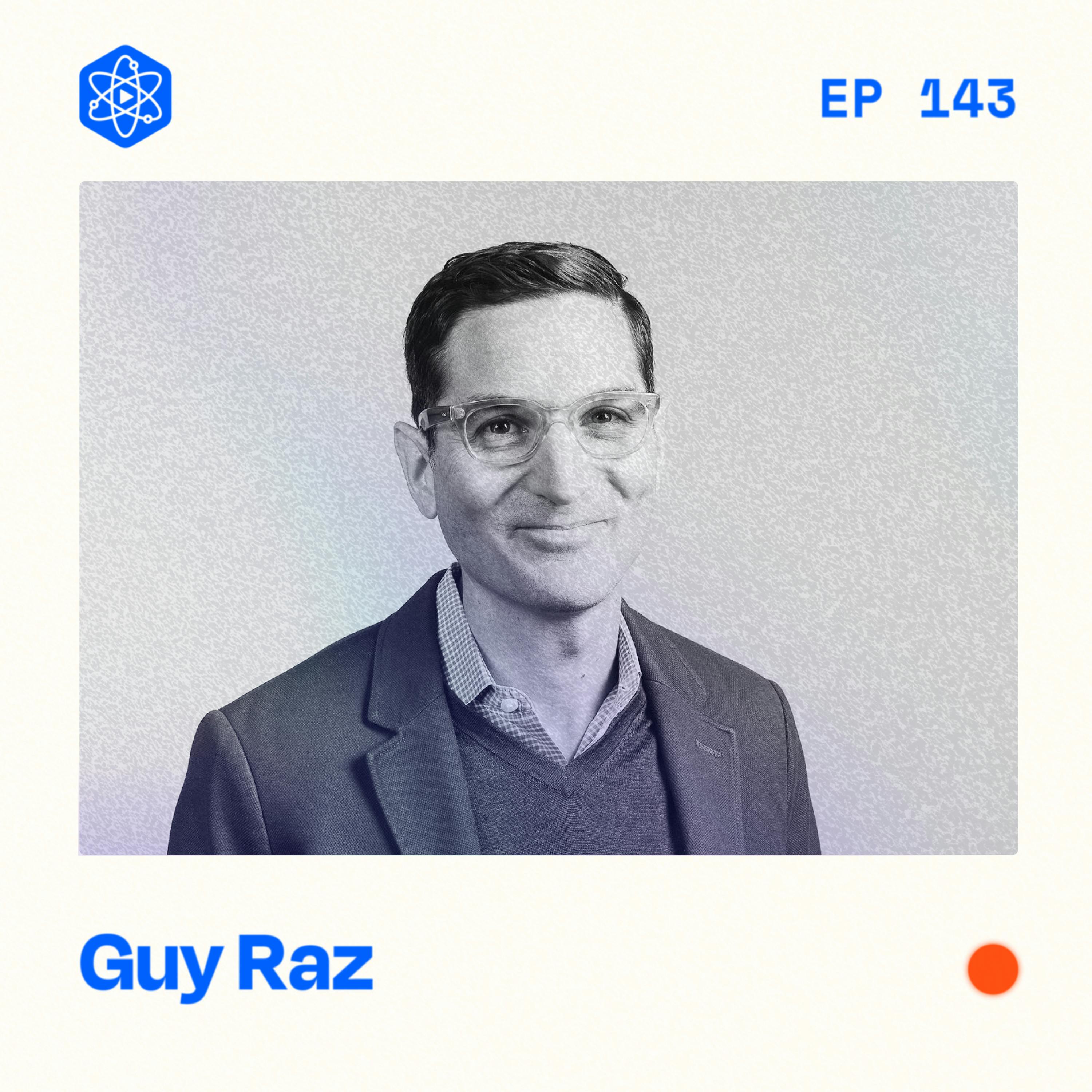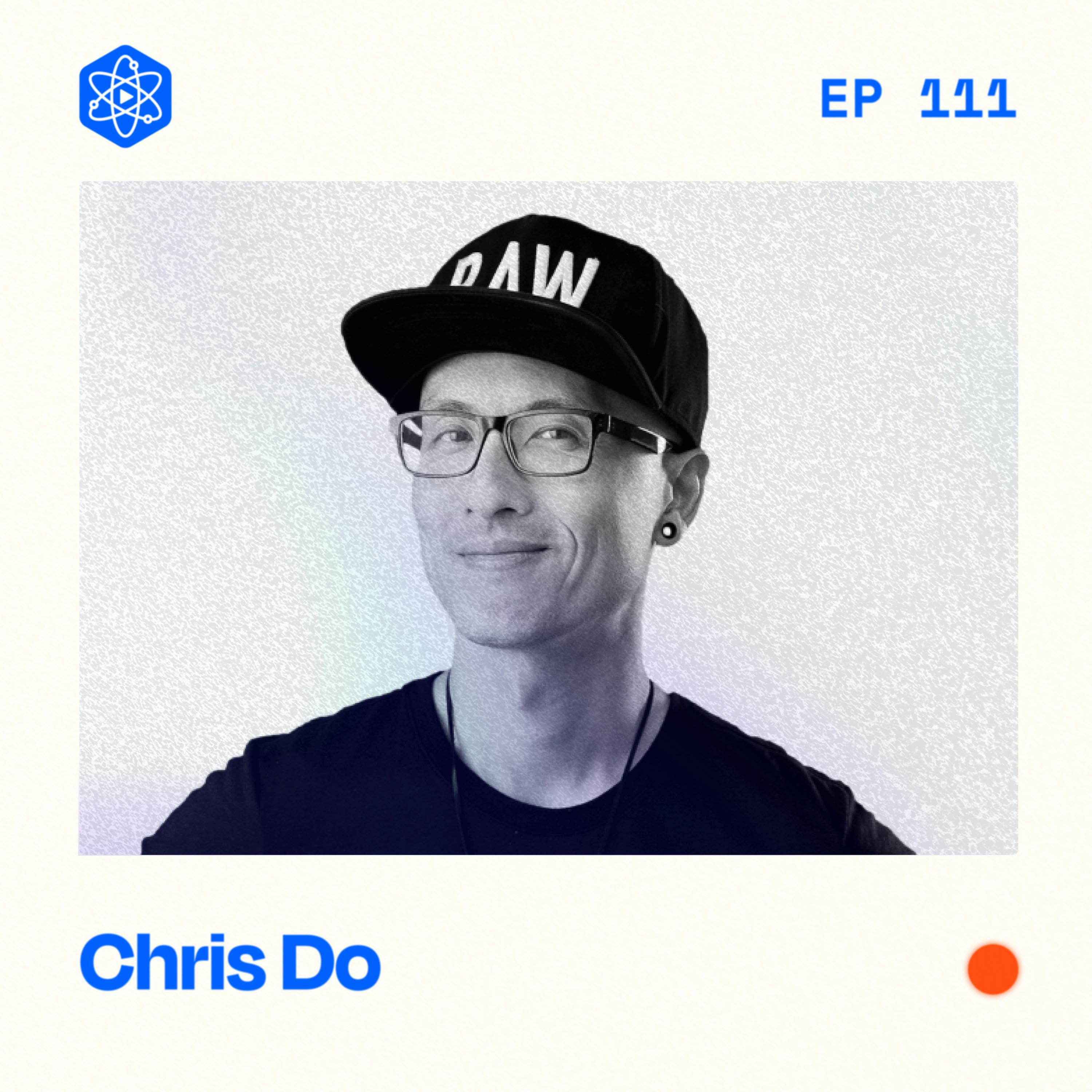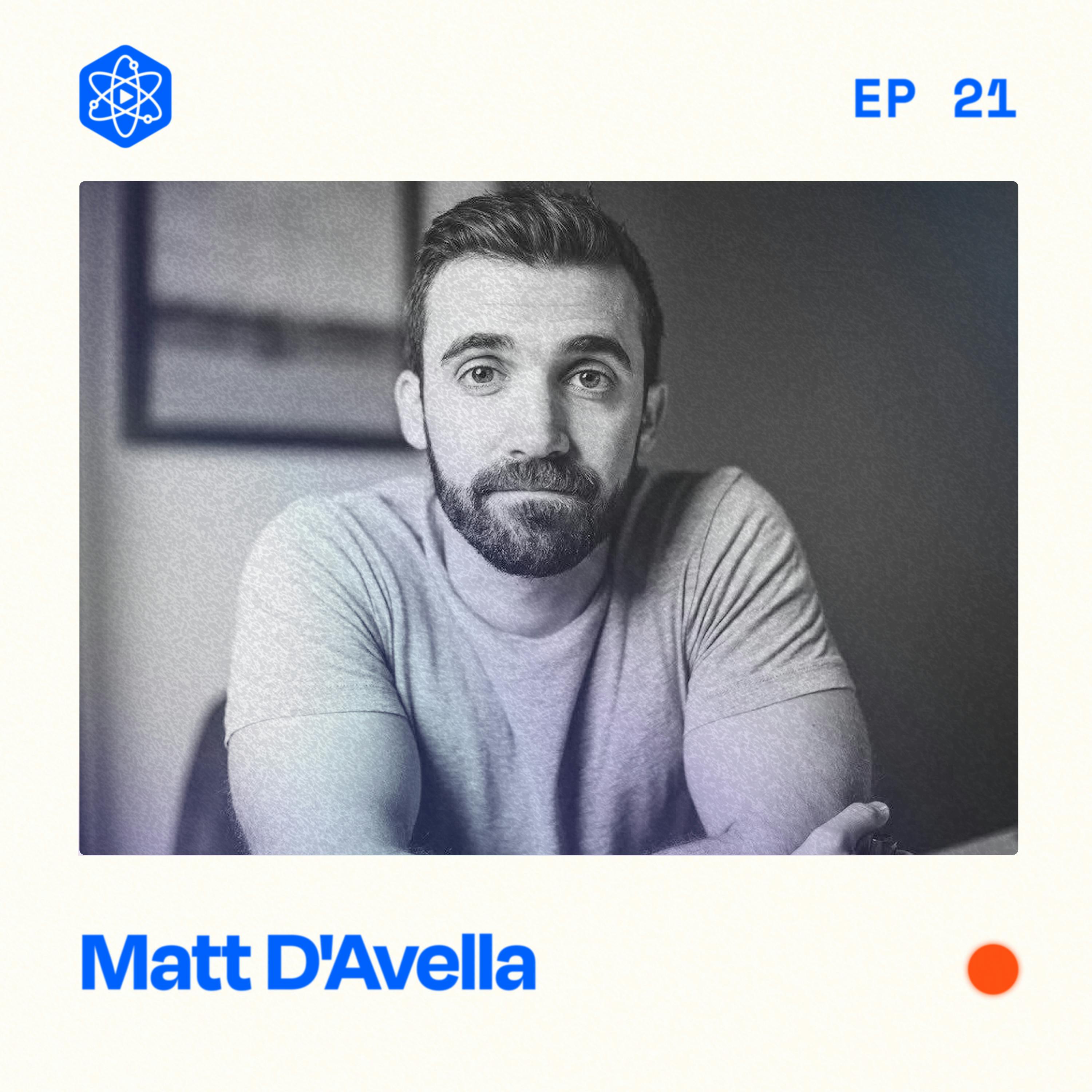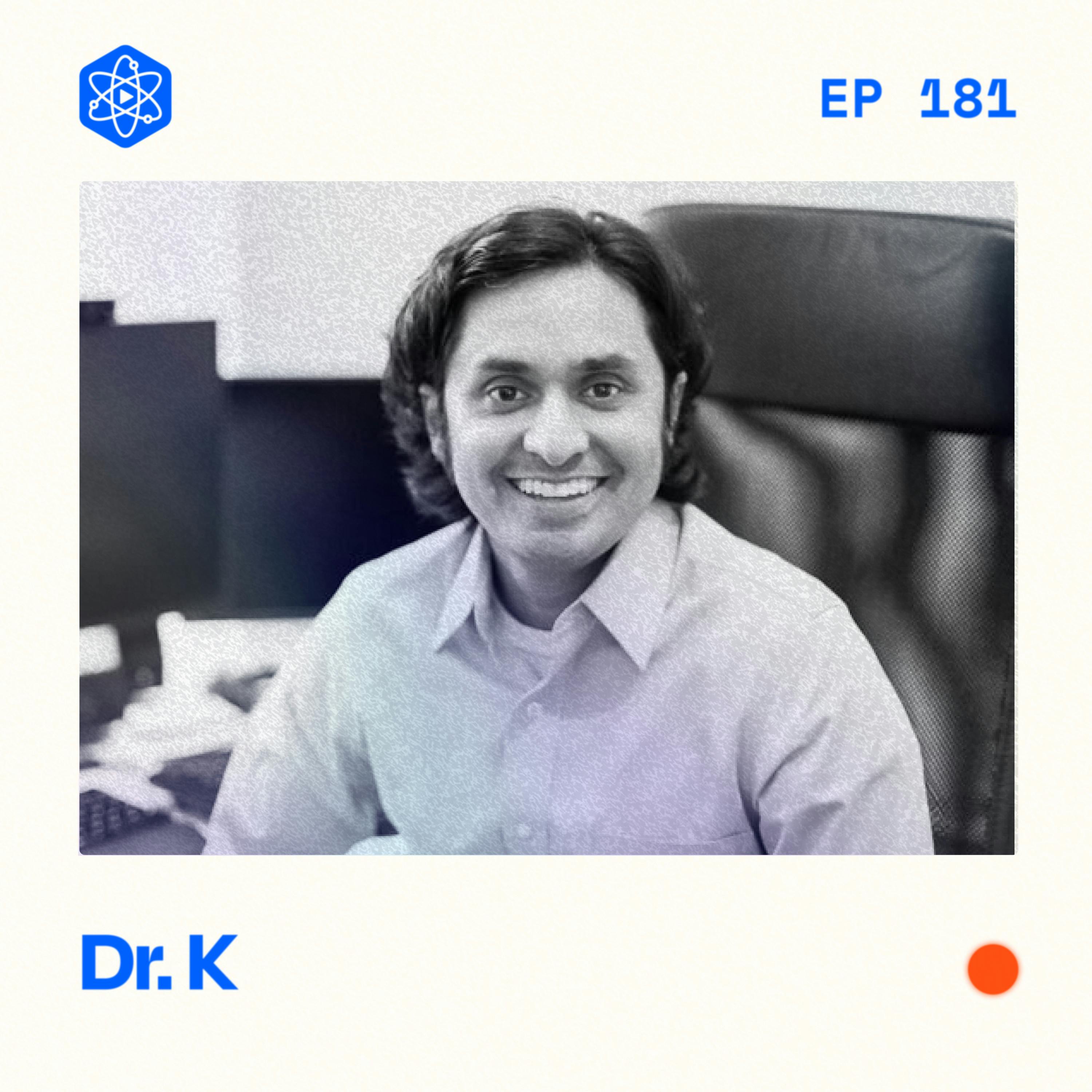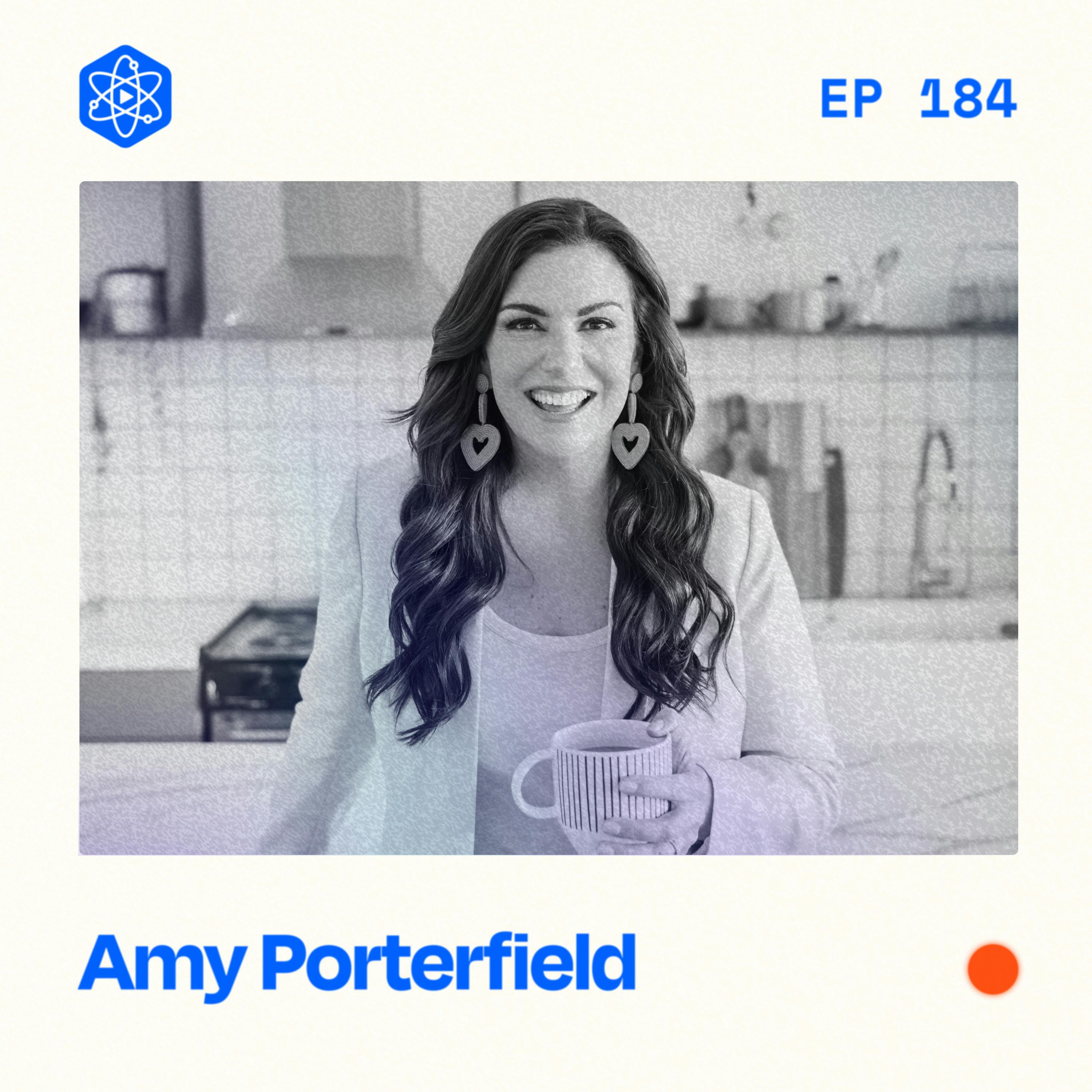Clients include MrBeast, Jesser, Ryan Trahan, and Noah Kagan
WATCH
▶️ Watch this episode on YouTube
***
EPISODE DESCRIPTION
Paddy Galloway is the most sought-after YouTube strategist in the world.
He’s worked with clients like MrBeast, Jesser, Ryan Trahan, and Noah Kagan. All in all, his clients generate 750 Million views PER MONTH.
And that’s because Paddy puts most of his focus where other people don’t: pre-production.
So in this episode, you’ll learn:
- What makes a great video idea
- How to develop great titles and thumbnails
- Why it’s better to take a few BIG swings rather than a lot of small swings
- And why YOU should be spending more time in pre-production
Full transcript and show notes
Paddy's Website
Follow Paddy on Twitter / Instagram / YouTube
***
TIMESTAMPS
00:00 - The Godfather of YouTube Strategy
00:55 - Spend MORE Time In Pre-Production
04:22 - What Makes a Great Video Idea?
09:44 - Importance of Packaging
11:44 - YouTube Title Best Practices
14:25 - Thumbnail Best Practices
16:48 - Using Text in Thumbnails
18:17 - Action & Curiosity Loops in Thumbnails
21:09 - How to Brainstorm Great Titles
24:53 - Developing Multiple Thumbnail Concepts
27:23 - Content Buckets
29:51 - Why You Need to Take Bigger Swings
***
RECOMMENDED NEXT EPISODE
***
WHEN YOU'RE READY
🚀 Get CreatorHQ (creator operating system)
🧪 Join The Lab (private membership community)
***
CONNECT
***
SPONSORS
💼 View all sponsors and offers
***
SAY THANKS
Paddy Galloway [00:00:00]:
I can't say it enough. Like I'll be blue in the face saying this until I think the day I die is like the idea is more important than everything.
Jay Clouse [00:00:06]:
That's Patty Galloway, the most sought after YouTube strategist in the world. He's worked with clients like Mr.
Paddy Galloway [00:00:12]:
Beast.
Jay Clouse [00:00:13]:
JESSER ryan trehan noah Kagan. All in all, his clients do 750,000,000 views per month. And that's because Patty puts most of his focus where other creators don't.
Paddy Galloway [00:00:25]:
How much time is spent on ideas. They're like, oh yeah, I think about it when I walk around. I have like a brainstorm session once a week. Let's just say you got 40 hours of typical work week. You're spending 1 hour of that time on the actual most important thing.
Jay Clouse [00:00:38]:
So in this episode, we're talking about what makes a great video idea, how to develop great titles and thumbnails, why it's better to take a few big swings rather than a lot of small swings, and why you should be spending more time in pre production. What is step one of how the best of the best are planning videos and going all the way through to publish time allocation?
Paddy Galloway [00:01:04]:
I think a huge amount of it comes down to where they're actually allocating their time in the video making process. The biggest sort of paradigm shift when I go into a channel is reallocating time towards ideas and towards thumbnails and towards packaging that idea to begin with. I just can't say how. I can't say it enough. I'll be blue in the face saying this until I think the day I die is like, the idea is more important than everything. Now, of course you can have a great idea if you don't execute it. It's no longer a great idea, but the idea itself is almost like, sets the standard of what this video could become. Is this going to be a video? Is this going to be a 5 million view video? Go, that idea to begin with is so important and yet when I do a sort of analysis on a channel, let's say at 100K subscribers, I say how much time is spent on ideas? They're like, oh yeah, I think about it when I walk around. I have like a brainstorm session once a week and I'm like, okay, so you spend an hour of actually intentional time coming up with ideas per week. Let's say you've got conservatively 40 hours in a week. Of course, we both know a lot of YouTubers work a lot more than that, but let's just say you got 40 hours of typical work week. You're spending 1 hour of that time on the actual most important thing. The first step is usually trying to instill this new sort of philosophy and culture towards making content, where I like to really analyze what we make, how we make it. What's the rationale behind making a specific idea in the first place? Some people don't like that and I completely understand that because I always think there should be some level of like, oh, this is just fun, let's just do it. There should still be room, there should be a quota for experiments and innovation and just like doing something for the hell of it because we feel like it. That's completely fine with me. But for the majority of the content, if the goal is purely to grow on YouTube, and this is like another conversation we get into what the goal is, because I find a lot of people are like, my goal is growth at all costs. And then you say, well, you need to think a lot more about your ideas and like, no, that's silly. I just want to do whatever I want to make. So there's like a lot of different forces at play. But realistically, I would go into a channel, I would just say, okay, we need a better system for coming up with ideas. Once we come up with those ideas, we need a better system in how we're actually packaging those ideas. And if we can't package an idea. So what I mean by package is basically title and thumbnail. If we can't title and thumbnail an idea that can be clickable for our audience, it's not an idea anymore. We scrap it. And I get this all the time. I've got this amazing idea, it's going to be so funny, I just can't think of a way to thumbnail it. And I'm like, well then it's not a good YouTube idea, unfortunately. It needs to tick that box. It needs to be a great idea. It needs to be very clickable. We need to be able to make a clear thumbnail around it. Then after that, the actual planning of the video as well, before we sit down and shoot it, like, what is the intro going to be? Could we write out three or four different intro versions, record them, listen to them back, decide which is the best one to shoot on the day, et cetera, et cetera. So I think a lot of the first thing I do with the channel is just look at the pre production side of things before the actual production. And then obviously I'll go in and I'll see what is their actual content like, what are they like on camera? How is their pacing in the video? Even just looking through the retention curves on their channel, is there any obvious retention danger zones that they just consistently lose viewers? The sort of typical stuff that a lot of people hear with YouTube analysis. But I think the thing that definitely sets me apart is that extreme focus on the idea Thailand thumbnail to begin.
Jay Clouse [00:04:22]:
With, what makes an idea a great idea, or something that makes you think, okay, that goes on the maybe pile at least.
Paddy Galloway [00:04:29]:
The biggest thing for me is establishing a criteria of what that idea is. So to kind of expand on that. Let's just say your criteria is this video has to excite us because I don't think we should make videos that we don't excited about. Just because it could get views isn't the reason to do it. Is this video feasible? That could be another part of their criteria. So you need ticks in both those boxes. So yes, we can pull this off and yes, we're excited to do it. Do we have evidence that this video could guess X amount of views? So let's just say your goal is to get 100,000 views. Do we have evidence that this video could get 100,000 views? Now, that's the first box in the criteria that doesn't have to be ticked. But ideally we should be able to look around and say, well, we've done something like this in the past and it's worked well. So yes, or we've seen other channels experiment with similar ideas that have done well. So yes, the reason it doesn't always have to be ticked is because sometimes you can't predict and you sort of just go with an idea because there's not much evidence on it. But you still want to give yourself that quota like I talked about for experimenting and trying new things, which is important because with some of the ideas Mr. Beast has posted over the last year, he can't really go around and look at a huge amount of other people who've done similar.
Jay Clouse [00:05:32]:
Who else gave away an island? Yeah, who else gave away an island?
Paddy Galloway [00:05:35]:
Do we even have data on this? It's going to be kind of hard to find that data. So yeah, it's important to have a criteria like that. There could be other things like can we think of the clickable thumbnail being part of the criteria which actually just decides if they should proceed? Of course. But I think the biggest one, the thing I've been leading up to is just looking at the idea and saying, does this have appeal in a wide percentage of my audience? So if you think about your channel as this big potential pool of viewers and you can break them up into like you got your core viewers, you've got the casuals who kind of dip in, dip out, you've got the new viewers that haven't seen your content before, but are potential good target viewers for your channel. I like to look at an idea and just put it through this sort of lens of saying, does my core like this? Does it also appeal to a new audience and a casual audience? Because all too often I see people that just pander to the core and what happens then is you just end up making videos that just get as many views as your core and you're not really in a good growth stage. And then I see other people that just make videos for new viewers. So they're constantly trying to attract that new audience and they have no longevity they have no throughline on their channel. They're just jumping around on trends without building any actual clear strategy over the long term. So the core viewers feel neglected. When I think about the channels that I've gone into and had the most impact, it's always been that case of saying, well, what do our core like? What about what our core like? Can we make into bigger ideas? Let's take an example like JESSER, who's the basketball channel I've worked with. I go in and I look at his channel. He was doing sort of 4300, 400,000 views of video. He'd been a bit bigger in the past, but he was down on a bit of a downward trend. I look at those videos and I'm like, okay, these are okay. But what does our audience like? They love basketball, so we can make basketball team videos, but how do we go bigger? How do we make an idea that's not just interesting to people that love JESSER and love his whole world and community builds up? So that's when we came up with some different ideas which went on to perform 510 million View Plus, because those ideas just penetrated beyond just the core, they had this sort of casual wide appeal. I always say with my content on my personal channel, I always say, I want to make a video that a YouTuber with 500 subscribers will find really useful. A YouTuber with no subscribers, who has no idea what the platform is even about, will find useful a video that Mr. Beast could watch and still say, that was pretty interesting. He'd probably be like, yeah, I knew this, but it's kind of interesting. And also a video that my mother could watch and say, oh, that was pretty interesting. So that can sometimes put you in a weird position because you're trying to pander to everyone. So I think there is like a counterpoint to that. But at least for the content that I make on my channel, it really helps because I just look at it and say, how can I make something that's just widely interesting to as many viewers as possible? And it really helps.
Jay Clouse [00:08:11]:
After a quick break, Patty and I talk about packaging videos with great titles and thumbnails. So stick around and we'll be right back. And now back to my conversation with Patty Galloway. I want to talk about the concept of packaging because this is something that until I went through your fantastic accelerator, I hadn't thought about the concept of packaging, which I want to talk about how that applies to YouTube specifically. But as you're listening to this, I want you guys to think about packaging even outside of YouTube. I think packaging is such an useful such a useful concept that I want to spend some time here. Can you explain what packaging is for a video on YouTube?
Paddy Galloway [00:08:46]:
I like to think of YouTube as a game of clicks and watches. So a lot of people again in terms of their time allocation, but also in terms of what they wait as important in their mind they will put all the emphasis on the actual content. Now that's important. And I would still say that is the most important thing. Like good content is obviously the most important thing. You can succeed on YouTube with kind of mediocre thumbnails. Sometimes if your content is just exceptional that it just penetrates through and people just watch and share it. We see so many examples that if kind of channels that don't have the best thumbnails but because their content is just phenomenal, they still perform. Whereas it's kind of rare to see someone who makes terrible content do well just because they've got good thumbnails. I'm sure people in the comments will call me out on that and say countless examples, but I think in general.
Jay Clouse [00:09:31]:
Let'S find it, let's find those examples.
Paddy Galloway [00:09:33]:
Yeah, that's how I view it. But with that said though, the thumbnail itself, even if we were to just conservatively say like, okay, the click part of that equation. So if YouTube is clicking and watching, let's just say the click part of that equation is basically 40% of it. 40% of what's important for YouTube. Again, just like with time allocation, even with how people deem as how important this is, it's still something that is given like 3-5-6 waiting instead of maybe 30 or 40% like it should deserve. So again, I talk to people and they'll go shoot an incredible piece of content. They'll spend maybe days, maybe even weeks making this piece of content and they're making the thumbnail an hour before the video goes live. So packaging for me is just that whole psychology around thinking of what we can put in front of the viewer that's going to make them click on this video. In terms of coming up with a good title and thumbnail, like for tile, there's a few best practices. For me it's always keeping it really simple. People sometimes confuse simple and short. I do have a preference for short titles, but sometimes you can have a title that's a little bit longer. But if it's still really simple and easy to read, that's important and that can still work. So I like to look at tiles that are really simple, really readable, think about people at all different sort of reading levels, but also all different languages. Because realistically you're going to get viewers from other countries, other places that English might not be their first language. If you go onto any big American channel that has a primarily US based audience, let's just say they have 60% of their audience in America. Now of course you might add on a bit of Canada, a bit of like the UK, a bit of Australia. They could have 20 or 30% or more viewers that are potentially watching from India, from other countries, from Africa, from obviously south america has a big audience as well. So there's all these different viewers potentially out there. So when I see a title that's like using complicated words or is just deliberately difficult to read or too vague, I always get red flags. I want to see something that's really simple, easy, straight to the point. I like to use really punchy language and titles, generally speaking. Let's just take my channel as an example of it. I'm not sort of going, hey, here's why Mr. Beast is really cool. You should watch this video. It's very much like how Mr. Beast broke YouTube. And it always kind of stood to me because I had a friend that was really into journalism, and he just looked at my channel from completely on the outside as like a complete non YouTube viewer. I don't think he even watched YouTube very much. And he just goes, you know what, Patty, your titles are just great because they're just punchy. They're straight to the point. There's no vagueness. You're not trying to be clever with a pun. You're just saying how Mark Rover beat the algorithm, how Mr. Beast blew up his channel or whatever it might be. The Jess, for example, of the channel I work with, one of our videos from last year that did really well was going to five NBA games in 50 hours. We didn't overcomplicate it. We didn't say, I went to five NBA games in 50 hours. And it was really difficult. Exclamation mark. Exclamation mark. It's just straight to the point, very matter of fact pragmatic language. And that's generally my preference for titles. I will say it does change a little bit based on audience and based on gender even. I actually see that female viewers sometimes do prefer a slightly different titling style towards male viewers. Sometimes a bit longer, sometimes a lot of lowercase. Where it's cut off in the male viewer is like a very pointy in your face thing. That's a bit of a generalization, but generally I do see that as a trend. But yeah, trying to keep it relatively short. Most of the best titles I've put together in my life with clients are usually 50 characters or under, and sometimes 60 characters are under, but generally 50 characters are under. And really thinking about universal, easy to understand words then in terms of thumbnails, for me the thumbnail is very kind of open. The whole world of best practices around thumbnails is very open to interpretation. I don't think there's a general like this is the only way to make a thumbnail because it does definitely depend on the audience. The first thing I would say is a thumbnail to me is at least 80, maybe 90%, the psychology of the click, and then maybe 1020 percent the actual design of the thumbnail. What does that mean? I'll explain. So let's just take the Mark Rober example. So Mark Robert has this thumbnail where he's testing if sharks can smell blood in water. A thumbnail like that doesn't take very long to design. It's pretty easy to actually put that together. It's very natural. It's using natural colors and lighting. But it has a really interesting scenario. You see this shark behind this person with his hands out in front of the camera and that creates this really interesting psychological reason to click. You're not clicking because the colors are great. You're clicking because there's a really interesting psychological angle of someone about to get attacked, potentially by a shark. So if you look at the best performing thumbnails on YouTube, sure they're well designed, but it's usually because they're showing something really interesting and really like a situation about to unfold, a dangerous thing about to happen, a really unbelievable object or item that no one's ever seen before. A tiny cell phone, a massive cell phone, these different things. What is actually being shown in the thumbnail is so much more important than the design. Not saying design isn't important. Color theory, making sure things are clean, obvious, easy to see. Just like a title like your thumbnail should be easy to actually process. I should be able to see it in just a glance. I call it the glance test. I'll often just put a thumbnail in front of me. Then I'll scroll by really quickly and just make sure that while it's in front of me, I can see everything that's happening. I can read the text, I can understand the image in just a glance of a second or two, as opposed to having to look at it and take too long to watch it or to understand it. We all edit thumbnails on. I've got a 4K monitor in front of me, big, widescreen. When I'm making a thumbnail on this computer, I have all this real estate. I'm looking at it for hours. I'm tweaking things and doing things. And this is the same for anyone that makes thumbnails or designers that make thumbnails for clients as well. We're looking at it on this massive screen, whereas a YouTuber sees it just for a split second. So being able to glance at it and understand it immediately is really important. So for me, it's really about the thing we're showing more than how we're showing it, if that makes sense.
Jay Clouse [00:15:27]:
That thumbnail example you just gave has no text on it. Your channel, all the thumbnails almost have text on it. What's the role of text in a thumbnail? What are the rules you have around that?
Paddy Galloway [00:15:37]:
I don't think there's necessarily the only hard rules I would say is in general, I would stay away from having over five or six words. So if you look at the thumbnails on my channel, generally it's like two or three words, maybe four. It's like how he beat YouTube or the kid who broke the YouTube algorithm or whatever. So it's generally quite short in terms of text versus no text. I have a bit of a pet peeve when I see people say never use text. If you use text, the thumbnail is a failure because I think for certain channels, text does add a lot. If you remove the text from my thumbnails, for example, they just end up feeling quite empty because there's no action, because my thumbnails are all commentary, videos, video, essays on YouTubers. You take that Mark Rover example with the shark, if he adds text in there, it just makes it busier. Like, it doesn't need to be busier, it's the actual action of the concept that is everything. Isn't it super easy to understand? Like, imagine he just pointed out with an arrow shark, it would just create this silly busyness to the image and it wouldn't feel as natural and raw as it's supposed to come across. Think about, can we show, like, if we could ideally show the action of the video without text, I would usually have a preference to it. But for a lot of channels that operate more in, let's say, commentary, education, tech review, stuff like that, I think the text does add quite a lot, so it does depend on the channel.
Jay Clouse [00:16:56]:
I'm hearing you say action and I'm thinking about tension and open loops. Are these the same thing in your mind or are you intentionally saying action versus like, oh, there's clearly tension in this thumbnail or there's an open loop here that you want to close.
Paddy Galloway [00:17:08]:
For me, the action example is more pertinent to entertainment channels. So the channels that are focusing on showing you something really cool and it's in action and things are happening, like there's a shark creeping up on Mark Rover. Mr Beast is like hanging out the side of a helicopter with a massive island beside him. So the sort of natural sort of focus of the thumbnail is of action. It is of a thing appearing and happening. But a lot of YouTube content is talking head, a lot of YouTube content is commentary. So for videos that are like that, it's much harder to sort of promote action in the thumbnail. So for ones like that, I think more about, yeah, how could we open a curiosity loop? How could we create a thumbnail where maybe you're just holding up a laptop and you've just got text beside the laptop that says waste of money. So then immediately you're like, Why was it a waste of money? That's like a very dramatic statement that's immediately going to grab your attention. So I do think, yeah, action is more focused for me when I think about entertainment channels. So if you're an entertainment channel, you're supposed to be entertaining people. You're supposed to be showing things that are interesting and cool and happening and real and alive and IRL in real life versus maybe a commentary channel, a review channel, a talking head channel, an education channel. You're likely going to be making your videos in your bedroom, so the action is sometimes harder to get across to the viewer. With that said, though, I saw this thumbnail recently from someone who was going through these different AI tools that he thinks are really effective. He could have quite easily made the thumbnail like a picture of his face pointing out, like a logo of one of the tools, and it wouldn't have been that in action, but instead he went for a version where he was on a keyboard. He created this motion blur effect around him as if he was like in the movie Limited or Limitless. So he's like, there's, whoa, things are happening. It's going. And the little logos from the software were like twirling around as well. And it just looked like an action packed video, even though it was still like a listicle, talking head type content. So maybe there are ways you can create action in thumbnails, even if there isn't that much happening in the video to still like kind of to me, it's about portraying the feeling that you're trying to give the viewer and it's portraying what the video is supposed to be delivering. So if you're saying five habits to become more healthy in your title, which no one did, that video very generic, probably a terrible title, but let's just say you're doing that video, I would still look and say, well, we could just have our face with five habits beside it, or we could actually be doing one of the habits. Because even though that's maybe more relaxed video, it's not really an entertainment video. I'm assuming if you're talking about habits, you're probably going to be showing yourself with some broad of doing those habits. So maybe it's you in the cold shower, maybe it's you at the table eating an apple or whatever it might be. So there are ways to promote action in thumbnails, even when there's not that much stuff happening in the video.
Jay Clouse [00:19:48]:
When we come back, Patty and I dive really deep into how he creates variants of different titles and thumbnails. So don't go anywhere. We'll be right back. Now let's get back to my conversation with Patty Galloway. If I have an idea that I think has precedent for having a lot of views, it's a good idea. I'm excited about it before I actually go to publish this thing. How many title variants do you think I should have? How many thumbnail variants do you think I should have? Or should I pick the best one of each and go out with that.
Paddy Galloway [00:20:20]:
In terms of title variations, because titles are just so easy to write, at least I find. And then now with Chat GPT, it's even easier to come with variations. If anyone doesn't know, just give it a title and say, give me variations of this YouTube title and then say, make it shorter, or add more emotion, or add a word like this in the title and you would just get an infinite amount of variations. So for title variations, I do quite often find that myself and clients go through a lot for a single video. Like, there is one specific client where a recent video we had 45 or 46 different title variations for 110 minutes video. And that just came down to like, what's the best title? Okay, let's look at that tile. That's pretty good. How about this? How about we shorten it? How about we add this word? Is this a better adjective than this adjective? If we put it in Chat GPT, what words does Chat GPT think we should be using for this tile? And we just went down this rabbit hole of continually going through it. And then what you do is you just zoom out, you look at the craziness that you've put together where there's probably titles on that page that make no sense and aren't even proper English. You eliminate all the ones that don't work and then you just look and you're probably left with four or five really good variations. And then you go from there and just pick the one that you feel that has the best potential for your channel.
Jay Clouse [00:21:29]:
If I'm doing this title game and I come up with 30 and it's me and maybe a team member, but we don't have Patty Galloway in our corner, how do we narrow that down? What should we be looking for to have the sense of, okay, these are the three best or even the first best, we feel better.
Paddy Galloway [00:21:44]:
Best about consensus between the team I think is important, like just asking people, which do you think is most interesting? Some of it is going to come down to subjectivity, but that will be the first stage for me because you guys are the ones who are creating the content. So you do have some information on previous videos. You've roughly seen what might have worked in the past and you might have roughly seen what worked for other people too. So I would first just look and see what is our natural sort of opinions on these titles ourselves. I then ideally would ask someone externally. So oftentimes people think, well, this is all really good, Patty, but we can't afford to hire you or you're busy or you've got a waitlist or whatever, but you can just find another YouTuber who's at a similar level and just get a second pair of eyes. Ask Twitter, ask your Instagram followers, ask your community tab. All those things are nice ways to get a second pair of eyes. And I think it's really important just to go through stages of feedback. So maybe as the team, you've narrowed it down to sort of four or five ones that you feel stand out the most to you as a viewer, if you were in the viewer's shoes, because maybe you have a certain list of non negotiable. Like it has to have under 60 characters. It has to be easy to read, it has to have short wording, it has to be like we don't want to have too many adjectives in one title because that's obviously too descriptive. And you narrow it down from 30 to five and then on those five you have a bit of a general chat as the team over which ones could be the best to put forward. And then you have maybe a little bit of a YouTube council. You have a group chat with other YouTubers or you find some other YouTubers you can reach out to on Twitter or whatever. That kind of stuff I still feel is underutilized. I really do. It's very easy to connect with other YouTubers and there's lots of discords out there. You can find other YouTubers at a similar size and just say, hey, let's create a group with like four or five of us and every time we have a title thumbnail, we'll just put it in there and we'll just brainstorm for each other and just help people make decisions on titles. And I also think there should be some level of like, has a similar title style worked for us well in the past or has it worked for our competitors or other people in our niche and using that as a bit of extra evidence as well. So you have like a mixture of personal preference, external preference, and then a little bit of data, a little bit of like looking at what's worked in the past as a combination of deciding which to go forward with.
Jay Clouse [00:23:47]:
How do you think about thumbnail variations?
Paddy Galloway [00:23:49]:
So for thumbnail variations, because generally a thumbnail will take a bit longer than a title, I don't like to overwhelm people, I will just get it out there in the open. I have made videos where there's been 30 variations of the thumbnail, like that has happened and that does happen quite regularly. Usually the variations are just like moving the text around, changing people in the thumbnail, different things like that. But that does exist at the top level of YouTube. I work with creators that are doing millions in revenue and that is worth it to us to have a huge amount of variations. But I would say for the majority, I like to break it down to basically three, like three concepts. You've got your first one that you've got maybe the most obvious one. You've got another one that you might have a bit more of a kind of out there version that's a little bit less obvious, something that's a bit more experimental. The thing for me is each option should be adequately different because some people, again, they might hear me speak or other people speak and say, make multiple thumbnails and they just make three thumbnails where the t shirt color is different. That is not what we mean. We want very different concepts because if the first concept isn't working, you're not going to save a video by just changing it to an image where now the t shirt is blue instead of red. This is probably not going to save the video. So I like to think of adequately different options. I like to think of three main options usually for most channels and again a similar sort of process of elimination in terms of maybe you sketch out and you concept. So you come up with 15 concepts or ten different concepts that you can either really quickly sketch out yourself. I like to really quickly sketch them out myself. I'll never share them publicly because they are the worst sketches ever known to mankind. But it's still like a useful way of being able to say like, oh, here's how this could look like what if his face was oh, I can kind of see how that could look. So building out maybe ten sketches and then narrowing it down to the three that you actually go forward with. But most people listen to this unless you're making daily content and you don't have time, I think you do have time to make three thumbnail concepts for a video, even if they're rough. I just want to see people really putting more effort into that. And I think, again, not to hint too much of the future, but I've been playing around with different AI in terms of thumbnail generation and I think it's going to be really helpful. Unfortunately, I can't reveal it because I just want to make sure that anything that we're doing like this, especially with clients, is kept quite private. But there is clients. I've actually built out thumbnail concepts completely with AI. Now the final product is going to be maybe using a bit of what AI taught us to make a better in real life photo that we took ourselves. But there are clients where we're completely using AI to thumbnail generate.
Jay Clouse [00:26:17]:
I want to talk a little bit about your idea around content buckets or idea buckets because I think this is a really helpful empowering concept to somebody who now wants to spend more time in the idea phase or making sure that they're picking good ideas. What are these buckets for sure, one.
Paddy Galloway [00:26:33]:
Thing I would say is it's definitely something that I have borrowed from other people who also use that same terminology and have used that when teaching YouTube. So it's definitely not something that I came up with originally as an idea of buckets. But generally I think it's really helpful for people to look at their content and almost draw the through lines. So say let's say let's take the Jesse example just because it's top of mind for me, because we've talked about it a few times on his channel, he's got this bucket. So like a category of content or like a series of content that involves going to NBA games. So we've got like going to the getting exclusive access to the NBA finals, or going to three Amb games in 24 hours, or going to a G League NBA game, all these different things that becomes a bucket of content. And in terms of brainstorming, you can then use that as a jump off point. So you can say when you're brainstorming, you could be like, let's brainstorm more going to games ideas and maybe another bucket is trick shots. Let's brainstorm more trick shot ideas. Maybe another bucket is Vlogs or something else. I wouldn't really recommend Vlogs, but something else. You could use each of those buckets as jumping off points for brainstorming. And I do find one thing I do want to point out with buckets is sometimes people get too caught up with it because I suggest an idea and they're like, that falls outside of my bucket, so I'm not going to do it. I think YouTubers should never be rigid like that. You should be flexible to doing lots of different content that could appeal to your viewer. Of course you want to keep it quite consistent and I like to think of a catalog of videos as opposed to like Scattergun approach of things all over the place. But when I think about bookets in general, I'm almost just thinking about series on a channel without making it an Episodic 12345 because generally speaking, that doesn't work amazingly well on YouTube. So just think of buckets as a way to break up the content you make into maybe three or four main series. I would say most channels I work with that do have a bucket focused approach to content, have kind of three or four main buckets to use as like groupings for their channel and just makes it sometimes easier to brainstorm ideas around it and give the audience a bit of consistency. Because if you're going and looking at your channel and saying, hey, I've got 15 different styles of videos that can't really be put in the same book because they all cover, can be different material, you might actually have a problem on your channel that's deeper than anything else.
Jay Clouse [00:28:45]:
So listening to this, people are probably thinking, wow, that sounds like a lot of time and a lot of effort spent in the idea and packaging phase. And I would agree something that I've realized bringing this in though, it feels like it's more worth it to spend more time on each individual video idea than try to put out just something on a really fast paced schedule. It feels like the upside is higher to take bigger swings than more frequent swings and that's something that I've really taken away as I've gone down this YouTube journey is like, think bigger, plan longer, be more flexible on the schedule that you're publishing on. Do you agree with that?
Paddy Galloway [00:29:28]:
I 100% agree. There are very few exceptions. I think the exceptions would be something like news. So if you make news content, it's no good to me seeing what happens last week. Today news content is very time specific. So if you make content that is extreme time specific, I'm also thinking like tech reviews of things come out right away. It's very important to be just like a content machine, get your content out. But for most channels, I think you can benefit from the quality approach. I actually gave a talk at a big conference and the title of the talk was how to Grow More By Posting Less. That was like my whole philosophy, because I think it's very conventional wisdom on YouTube that you have to be consistent, you have to post lots of videos. I think that's important at the beginning stage of your journey, for sure. I would recommend beginner YouTubers post as much as they can without burning themselves out. Like, post as much videos as you can get the reps in, for sure. But once you get to a point, I think it's important to look at it and be a bit more tactful with what you're doing. And don't just have this scattergun approach of, I need to make video, I need to make video, I need to make video. I find myself having to almost deprogram YouTubers from that philosophy and way of thinking on a daily basis. And these aren't just beginners, they're like YouTubers with a million subscribers. I feel like, dude, it's better to miss this week's video than post a bad video. That's going to not satisfy our viewers. It's going to churn viewers. People are not going to click on it. They're going to be like, Why did he post that? That's way below his usual standard. So I do like to have the quality approach. I think it can work in nearly every niche. An example I use quite a lot is I've done a bit of advisory work for the last two years with last year and a half with Noah Kagan. Before I came into help with Noah Kagan and his team, they were posting three or four videos a week for two years. In the sort of six months after I started working with them, we reduced that upload frequency down to three or four videos a month. So not three or four videos a week, three or four videos month. And if anyone wants to go look at a graph of 2021 November 2021 onwards, you'll see the years before that and then the years after it, and how quickly that trajectory happened by long form, like, shorts have helped us since. But it was long form that originally took off that massive trajectory, and a huge part of that was I didn't do anything that special. I helped with some thumbnails, I helped with ideas, and myself and Jeremy on the team go back and forth on things a lot, but ultimately it was just approaching YouTube with a better philosophy and saying, no, this isn't just a treadmill. We have to post three or four videos a week on this can be something where we are much more tactful. And I remember very clearly talking to the team and saying at the start, it was like, if something can't get 100K views, we shouldn't make it. And we were very tactful over like, do we think this has potential? Is this a big enough topic? So we went from making very niche videos to making videos that had that broad, wide appeal. And funny enough, the first video we did together now has four and a half million views. So when you you apply that thinking, of course, every occasion doesn't work like that. Sometimes it takes a lot longer. When you apply that thinking, I think it can make a massive difference to a lot of channels.
